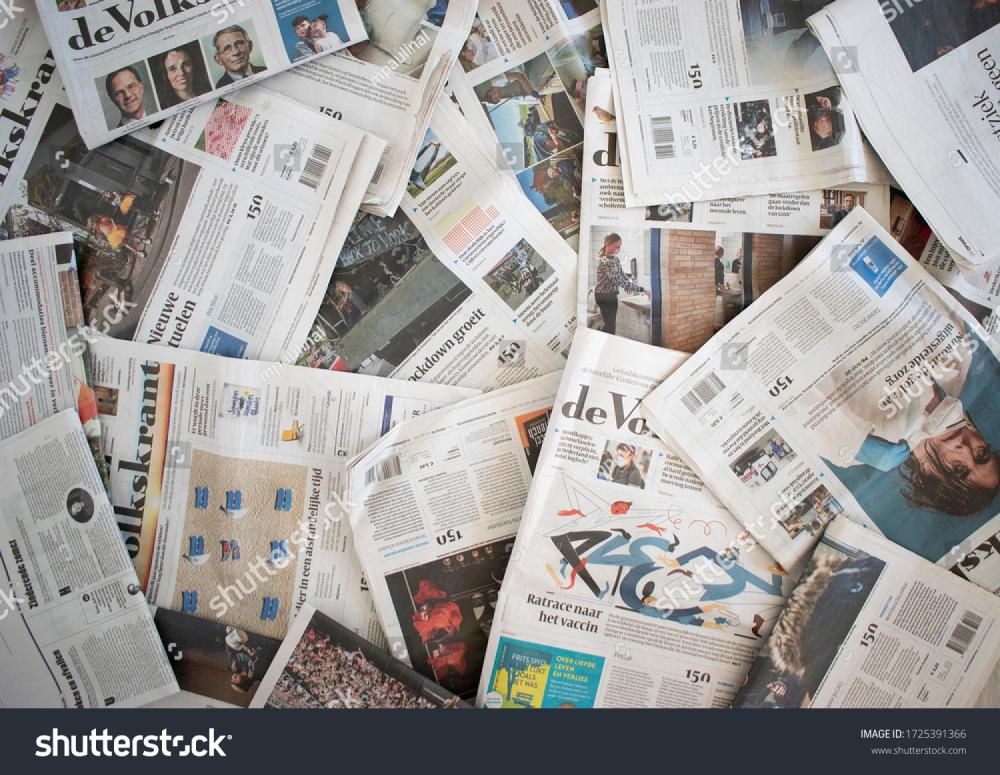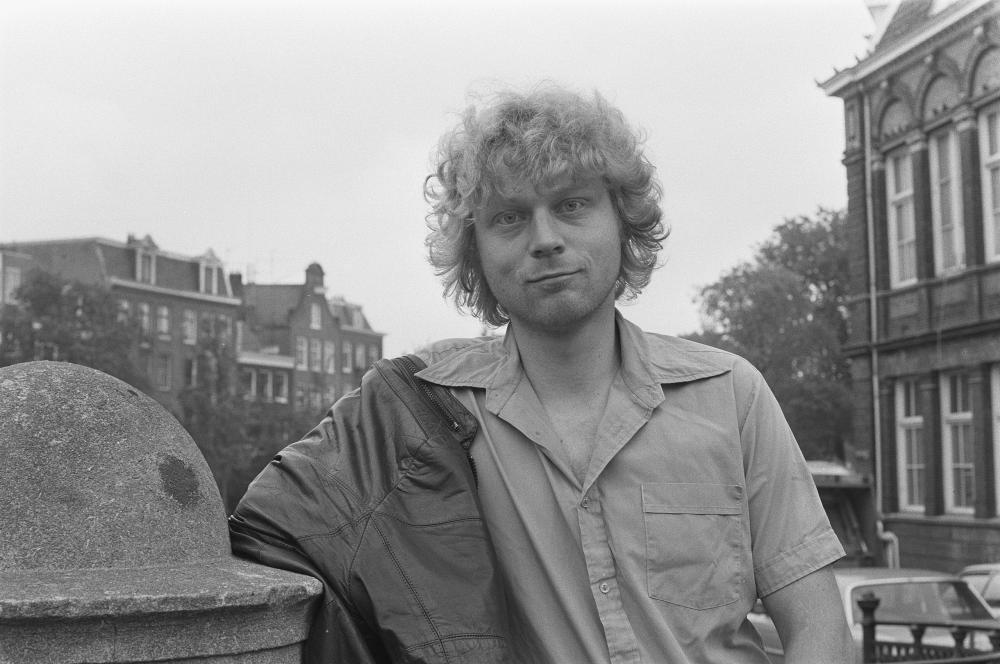Summary and History
For Summary and History, see the presentation in the Netherlands Country Study in "Majority Rule/Minority Rights."
Freedom of Expression

Netherlands, CIA World Factbook
The Netherlands has a long history of free media, free political debate, free and fair elections and pluralist political competition. That tradition continues.
In Freedom House’s survey Freedom of the Press: 2017 (its last report dedicated to media freedom), the Netherlands tied with three other countries (Belgium, Finland, and Sweden) as having the freest media ranking in the world. In its 2024 Press Freedom Index, Reporters Without Borders ranks the Netherlands as the sixth freest country behind Norway, Ireland, Denmark, Sweden and Finland. (By comparison, the United States is 55th out of 180 countries.)
Freedom of expression is guaranteed by the Netherlands constitution and is respected in practice. The country's public and private media outlets cover all news, are critical of government actions and policies and promote wide-ranging debate and political analysis. Unlike in some democracies, news media remain highly trusted. Social media is highly distrusted (by 85 percent of poll respondents), indicating that the large Dutch audience for online and digital news is discriminating in its media consumption.

Freedom of expression is guaranteed by the Netherlands constitution and is respected in practice. Above, a climate change crisis demonstration in Amsterdam in 2003. Shutterstock: Photo by pmvfoto.
Netherlands has a long history of free media, free political debate, free and fair elections and pluralist political competition. That tradition continues.
In the November 2023 parliamentary elections, the surprise first-place finish of a far-right anti-immigrant party, the Party for Freedom (PVV), challenged the Netherlands’ political balance of center-right to center-left parties. It surged to 23 percent, earning 37 of the 150 seats in parliament. Previously, no other parties would form a government with the PVV, which received between 10 and 15 percent of the vote in the last four elections. After the party’s long-time leader, Geert Wilders, withdrew from consideration as prime minister, negotiations allowed a majority right-wing government to form with a civil servant and independent, Dick Schoof, serving as prime minister (see Current Issues in the Majority Rule, Minority Rights Netherlands Country Study).
The general political atmosphere in the Netherlands, however, remains mostly liberal. The multi-party system, with fifteen parties gaining seats in parliament in the most recent election, reflects the broad representation of Dutch viewpoints, a large majority of which remains in a traditional center left-to-center right political spectrum.
As in neighboring Denmark, the tradition of free expression in the Netherlands has come under attack by extremists using violence and threats of violence to silence debate about crucial issues (see below and also the Netherlands Country Study in Majority Rule, Minority Rights). A fuller description of media freedom in the Netherlands is below.
The Broadcast Pillars
The Netherlands developed a unique system for public broadcast media dating from the mid-1920s. As part of its general “pillar community” policy from that time, four associations representing Catholic, liberal, Protestant, and Socialist parties were granted radio licenses to share time and resources on a single public broadcasting system. This system was extended to television in 1951 and then over time broadened to cover ten social pillars (including other major political parties, the Muslim community and youth). Each member association, or “pillar,” continues to produce Dutch-language shows for the public broadcasting station based on ratios of population and viewing audience.
Netherlands developed a unique system for public broadcast media dating from the mid-1920s.
The arrival of cable and satellite introduced a broader range of stations, now including six Dutch commercial stations that operate under strict advertising guidelines. There is also an increase in regional and local broadcasting as well as access to foreign channels. Cable and satellite viewing has decreased the reach of “pillar” community broadcasting. At the same time, the pillar system continued to hold the strongest position in Dutch viewership as of 2016 at 38 percent. Forty-four percent of the Dutch public reported receiving news primarily from public broadcasting stations.
The Print and Digital Media
Previously, print media was connected to political parties along the traditional spectrum (left, center and right) and to religious orientation (Catholic, Protestant and secular). Today, the ten national and sixteen regional print newspapers that remain from that period are mostly independent of political parties, but some remain tied to a religious group.
There is not a significant tabloid press, as in the United Kingdom. Nor is there the phenomenon of media tycoons, despite the fact that the concentration of ownership is high. Two major companies, both foreign, own 80 percent of national and regional daily papers, but they each publish a wide range of opinion and news.

Although distribution of print media has declined, Netherlands continues to have among the highest distribution percentage of newspapers and magazines in the EU. A selection above shown in Vlissingen. Shutterstock: Photo by mpaulinal.
Although distribution of print media has declined, the Netherlands continues to have among the highest distribution percentage of newspapers and magazines in the EU.
Although distribution of print media has declined, the Netherlands continues to have among the highest distribution percentage of newspapers and magazines in the EU. (There were 3.2 million daily subscribers in 2015 out of a population of 17 million, down from 5.7 million in 2007). There are digital editions for most newspapers and subscription.
Internet use is widespread. According to New Media Trend Watch, there were 15.5 million subscribers by 2014, nearly the entire population. Fifty percent of the population actively used social media sites, while 93 percent overall regularly use the internet. That number remains steady.
A new innovation, the “Paydike” web application, has established a one-stop shop where all major Dutch newspapers and magazines have agreed to post their articles for readers to select as they wish with one digital subscription.
As of 2021, fifty-five percent of the population gets news from internet sites (including internet streaming of broadcast stations) and most print newspapers have web site versions. A new innovation, the “Paydike” web application, has established a one-stop shop where all major Dutch newspapers and magazines have agreed to post their articles for readers to select as they wish with one digital subscription.
There is no state filtering or censorship on the internet and the Netherlands was the second country after Chile to adopt a net neutrality law that prevents telecommunications companies from discriminating in charges or creating bias in search results based on data usage.
Extremism: A New Threat
Political extremism in the Netherlands emerged in the early 2000s as a serious threat to free expression.
Political extremism in the Netherlands emerged in the early 2000s as a serious threat to free expression. Pim Fortuyn, an anti-immigrant right-wing politician who came to prominence in 2002, went against the public culture of tolerance with extremist rhetoric against Islam and Muslims. His assassination by an animal-rights activist prior to that year’s elections introduced a worse phenomenon: political violence (see also the Netherlands Country Study in Majority Rule, Minority Rights).
Fortuyn's assassination encouraged a similar action in October 2004 by an Islamic radical who murdered a filmmaker, Theo van Gogh, after his release of two documentary films on the repressive conditions faced by Muslim women in fundamentalist communities. The response brought free expression into sharp relief.

The film director Theo van Gogh, whose film Succession depicted harsh treatment of women under Islamist rule, was murdered in November 2004 by a religious extremist. Creative Commons License. Photo by Sjakkelien Vollebregt.
Ayaan Hirsi Ali, a Somali-born minister of parliament received death threats and had several attempts made on her life for her participation in van Gogh’s documentaries. (She resigned her seat in parliament and emigrated to the United States.) Such intolerance propelled broad public debate over the country's decades-long immigration policy of "absorption without assimilation." More restrictive policies were adopted to limit immigration and encourage greater assimilation of immigrant communities.
The Cartoon Wars: Solidarity and Backlash
The intolerance shown for free expression in the cases of Van Gogh and Hirsi Ali also manifested in the global reaction to the 2006 publication of cartoons mocking the Prophet Muhammad in a Danish regional newspaper, Jyllands-Posten (see also History in this section). Fundamentalist Muslims protested such depictions, which are prohibited by the Koran, in Denmark and at Danish embassies in predominantly Muslim countries.
As a sign of solidarity for free expression, several newspapers in the Netherlands republished the cartoons and received threats of violence. The Prime Minister at the time, Jan-Peter Balkenende, stated that while he understood that some images might be provocative to Muslims, “In our world, when someone crosses a line, we take the matter to court. There is no place here for threats.”
Balancing Rights, Tradition, and Hate Speech
One anomaly to the general free expression culture is a law enacted in 1881 and still on the books that bans insulting the monarchy. (Insult laws are common. France had a law against insulting the president until 2013.) There were 19 cases brought between 2000 and 2012, with nine convictions. There have been fewer cases brought since.

In Netherlands, hate speech is proscribed as illegal, but the effect of the law is debated. Geert Wilders, above, was both convicted and acquitted of hate speech over the last 15 years, but led his far-right anti-immigrant party to a plurality victory in 2023 elections. Creative Commons. Photo by David Sedlecký.
More significantly, the courts continue to wrestle with defining precisely the enforcement of a law against inciting hatred adopted after World War II. In 2011, the court acquitted Geert Wilders, leader of the anti-immigrant Party of Freedom (PVV), on charges of inciting hatred for threatening speeches against immigrants and describing Islam in crass terms. . In that case, the court determined that Wilders was engaged in public debate and not in direct attacks on Muslims as individuals or as a group. A new case was brought after Wilders called for the deportation of all Moroccan immigrants. In that case, he was acquitted of inciting hatred but found guilty of insulting a racial group. An appeal to the Supreme Court is pending. As noted above, the PVV, still led by Geert Wilders, won a plurality in the latest elections, in part by softening its positions.
In 2014, the government adopted recommendations made in a report, “An Integrated Approach to Jihadism.” These changes allow monitoring online distribution of jihadist material that “encourages violence, radicalization or hatred.” The government obtains agreements with Internet Service Providers to block such content but if material is not removed the government can take criminal action against an alleged offender or ISP provider. Intelligence agencies are also known to gather “untargeted” data from users of suspected extremist web forums.
[T]he courts continue to wrestle with defining precisely the enforcement of a law against inciting hatred adopted after World War II.
Tensions between freedom of speech and internal security are increasingly common in response to expressions by both violent Islamists and also right-wing and “anti-institutional extremists.” One tension is gauging the impact of threats of violence. A 2022 media report indicated that “many politicians faced increasing threats and intimidation from extremist groups or citizens with policy grievances,” according to the Freedom House Country Report on Netherlands for 2023. Such threats have caused some politicians to self-censor their public speech.
The content on this page was last updated on .
